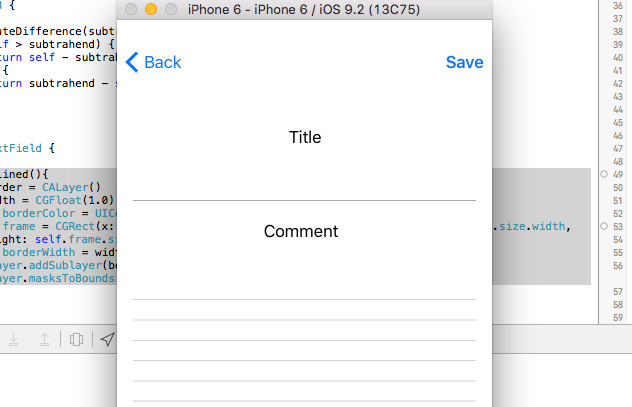

- SWIFT SHARE EXTENSION TUTORIAL HOW TO
- SWIFT SHARE EXTENSION TUTORIAL CODE
A property with a wrapper cannot be lazy, weak, or unowned.A property with a wrapper cannot be overridden in a subclass.
SWIFT SHARE EXTENSION TUTORIAL CODE
Property wrappers are not yet supported in top-level code (as of Swift 5.1). Property wrappers come not without their price. Here you can learn more about the compilation process: Understanding Xcode Build System. During the SIL generation phase, the backing storage for a property with an attached wrapper is generated SILGen.cpp. After ASTContext has been evaluated, it is now able to return property wrapper type info via getOriginalWrappedProperty() and getPropertyWrapperBackingPropertyInfo(), which are defined in Decl.cpp. Specifically, when the walker finds a property with the attribute, it adds this information to the context for later use. ASTWalker traverses the tree and builds ASTContext out of it. Swift code is parsed into the expressions tree by lib/Parse. Let’s dig one level deeper and find out how property wrappers are synthesized on the Swift compiler level: The straightforward way of doing this is by overriding a setter: It’s useful when chasing a bug or tracing the flow of data. 
Every time a property changes, we print its new value to the Xcode console. Say, we want to add extra logging to our app. To better understand property wrappers, let’s follow an example to see which problems do they solve.
Which restrictions do property wrappers impose?. How property wrappers are synthesized by the Swift compiler?. 
How we can utilize property wrappers in our code?.
SWIFT SHARE EXTENSION TUTORIAL HOW TO
How to access a property wrapper, its wrapped value, and projection?. In this article let’s study everything about property wrappers: Property wrapper is the Swift language feature that allows us to define a custom type, that implements behavior from get and set methods, and reuse it everywhere. However, this approach doesn’t scale well. Some patterns, like lazy and are already baked into the compiler. Say, when you want to observe property changes, make it atomic or persist in user defaults. Swift properties often contain extra code in their get and set methods.







 0 kommentar(er)
0 kommentar(er)
